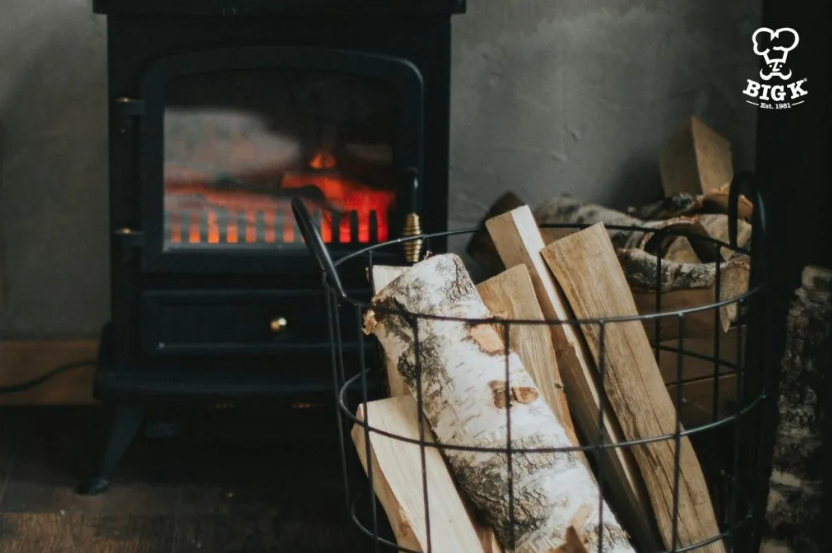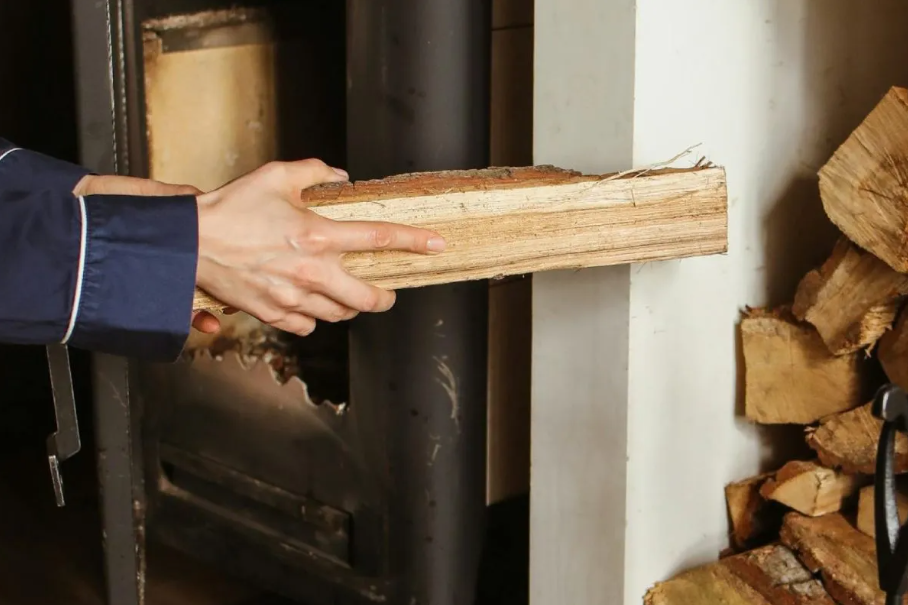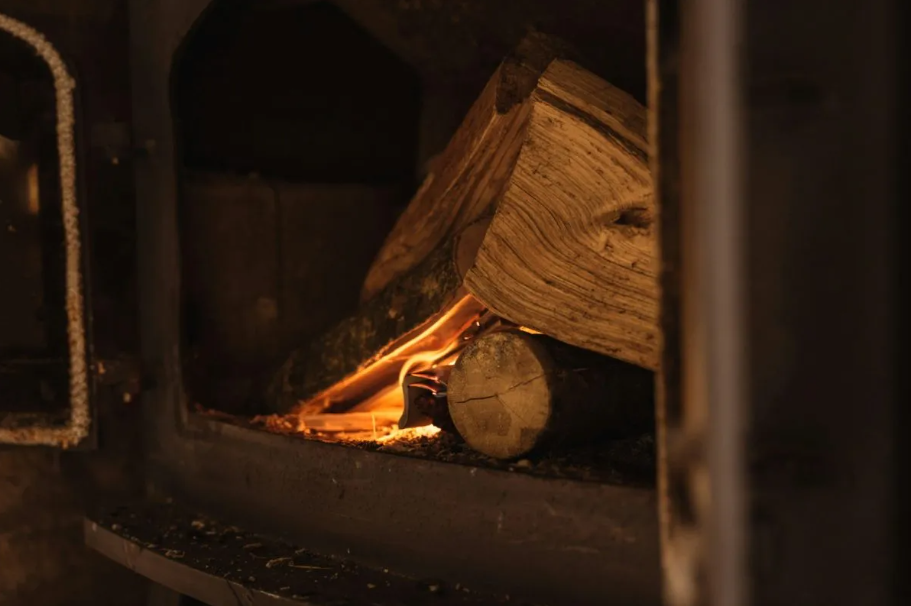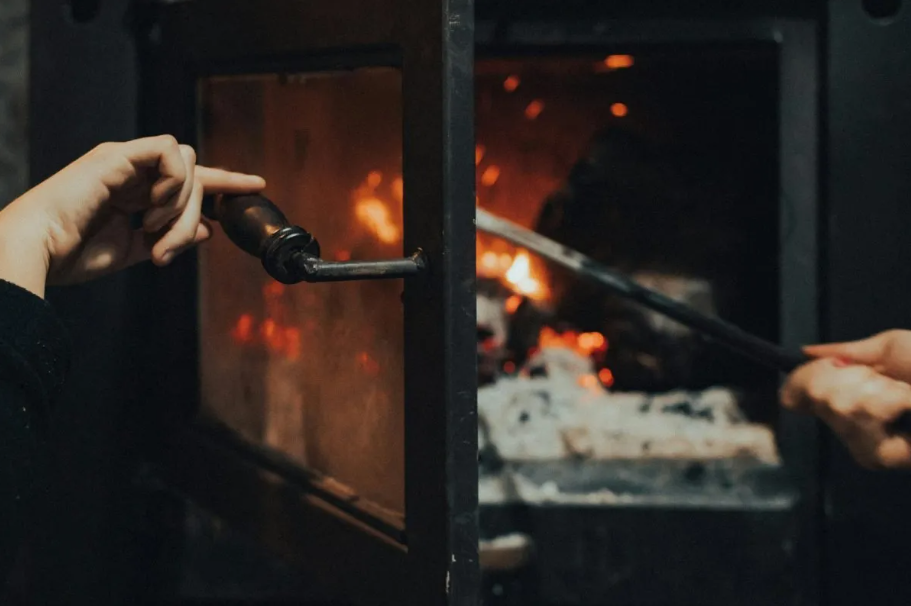
There’s something comforting about burning wood to keep warm. The flickering of flames, all those orange and yellow hues and of course, soothing heat. From log burners and wood-burning stoves to fire pits and fireplaces, there are many ways to enjoy the benefits of a classic fire. In fact, we have started to see a resurgence in the popularity of log burners throughout the UK. In the face of challenging times, burning wood has emerged as a more economical option to gas and electricity. So now is the perfect time to explain a little more about these fantastic appliances and how to light wood in your log burner.
What is a log burner?
The best place to start is at the beginning. A log burner (otherwise known as a wood burner) is an easy-to-use heating appliance. How does it work? Simply pop some logs, wood chunks, or heat logs into your log burner’s firebox and light the wood. As the fuel burns it releases heat, warming up the surrounding environment.
What kinds of log burners are out there?
Log burners have come a long way since their inception. Pre 1998, they relied on a singular phase of air intake during combustion, causing higher emissions and lower heat efficiency. These days, all new log burners are classified as clean-burning. This means that they separate the combustion process into two stages, taking in air at each stage. The result? A more efficient burn with lower emissions and increased heat. There are two types of clean-burning log burners – catalytic and non-catalytic. Both types of burner maximise the potency of the combustion process, whilst simultaneously reducing creosote emissions and increasing burn time.


How to light a log burner?
Anyone can get some flames going. But it takes a little knowledge to create a fire that will deliver consistent heat. So if you’re sitting there asking yourself ‘how do I light a log burner?’ don’t worry. We’re here to point you in the right direction. Take a look at one quick method below.
- Before you do anything, please ensure your wood is nice and dry. Wet wood leads to a smoky mess, lower temperatures and an inefficient burn.
- Place two larger blocks of wood into your log burner’s firebox, followed by two smaller pieces of kindling on top (laid horizontally) and finally pop two bigger pieces on top of the stack.
- Add a few natural firelighters in between these two bigger blocks.
- Position another horizontal layer of kindling on top of these blocks with more firelighters in the gaps between the blocks.
- Light your top layer of firelighters
- Once you see a strong flame at the top of your log pile (usually takes 2-5 minutes) you can close the door of your log burner.
Why do I light a log burner from the top down?
When we light a fire from the top, we obtain a small flame with a high enough local temperature to optimise the beginning of the combustion process. The flames will then descend into the stack, and help the bottom logs to catch. If you light your log pile from the bottom up, you are burning all the wood in one go, which means it will take a lot longer for your fire to reach the right temperature for efficient and hot combustion.
A quick word on air intake
Combustion relies on oxygen, so it’s common sense that you should be regulating the air intake in your log burner throughout the burn. Usually you will find one or two vents on your log burner. You can use these to regulate the air entering the main chamber by increasing or decreasing their aperture.
At the beginning of your burn, they should be kept open – delivering the highest amount of oxygen possible. After a few minutes, you should reduce the vents to about halfway closed. This means you are feeding less primary air and more secondary air into your burner, transitioning into a more slow and steady burn. Ultimately, regulating your air supply gives you more control over how much wood you end up burning, as well as how much heat is produced.
What are the benefits of using a wood burner?
- It’s fair to say that wood-burners are definitely efficient. In fact, they can produce the same amount of heat as a radiator, while using less energy.
- Wood burners can heat a single space very easily.
- Having a power cut? No dramas. Log burners are analogue requiring no electricity.
- Log burners can sync up with other low carbon heating choices such as heat pumps.
- Looking for value? Log burners are more economical when compared with gas or electric.


Do I need a chimney if I am lighting a log burner or wood burning stove?
Not necessarily. Too ambiguous an answer? Let us elaborate. You can use a log burner or wood burning stove without a chimney, however the installation becomes a lot trickier and expensive. Why? Well, there’s a strong chance you’ll need to integrate a twin wall flue by going through the roof or the wall.
How long does it take to heat a room with a wood burner?
We’d say anywhere between 3-6 hours depending on the insulation and size of the specific space.
Can I burn other fuels in a log burner?
We might be stating the obvious here, but wood burners and stoves are specifically engineered to optimise the burning of wood. So the short answer is that you really shouldn’t. However, to elaborate a little more; while you could burn other kinds of fuel in your burner, be ready for the consequences. For example, burning the wrong fuel could increase the emissions from your burner, leading to chimney damage and perhaps a potential chimney fire down the road. Avoid artificial accelerants to get your fire going too, as they can drip down and damage the air regulating mechanisms in your log burner or stove.
Is a log burner right for me?
If you live within a Smoke Control Area, then you can only use DEFRA-approved smokeless fuel (such as smokeless coal) in your burner – meaning wood isn’t an option. But there is a way around this. If you can obtain a DEFRA-exempt stove or burner, then you can burn all the wood and logs that your heart desires. You’ll find that the majority of manufacturers and suppliers mark DEFRA-exempt products with special approval stamps – so keep on the lookout for those. Of course, if you live outside of a Smoke Control area then you’re good to go!


What’s the best wood to light in a log burner?
We just did a deep dive on this subject in our last blog. If you’re pressed for time, here’s a quick recap.
You should be burning the driest and densest wood possible. We’d suggest kiln dried hardwood logs with a sub 20% internal moisture level, or compressed heat logs with a sub 8% internal moisture level. In even more enlightening news, you can find all the best wood fuel for your log burner at bigkproducts.co.uk. Simply buy direct from our website and we’ll deliver straight to your door. Sounds like a win-win to us.
As winter bites, bite back with a clean, efficient and super-hot fire in your log burner. Your home will thank you for it.
